.png)
How to Fix a Golf Hook: an explanation of the root causes and 3 effective drills for you to try out
They say that a hook (or the snap hook) is the last step before a great swing. I think that most golfers understand a draw shape is desirable, and by the time you get to this point where you are suffering from a hook, you understand the mechanics of the swing, how to efficiently transfer energy to the ball, and how a ball moves from right to left and vice versa.
But before we get into it, a quick intro to the hook (also known as the snap hook, the escort, the second most hated shot of all time). A golf hook is where the ball sharply curves from right to left for a right-handed golfer. While a hook generally results from more efficient energy transfer than a slice (and therefore you might find the ball travels further), it signals a different set of mechanical and clubface control issues.
Good news? The drills to fix a hook are actually very similar to how you fix a slice. If anything you might be overcompensating the action to address a slice, which has now turned into a hook.
In this blog post, I talk through what causes a hook, and three proven drills to help address the root causes.
At its core, what are the fundamental causes behind a golf hook?
At its core, a hook occurs when the clubface is closed relative to the switch path of the club through impact. This creates counterclockwise spin (for right-handed golfers), causing the ball to curve left.
The fundamental causes of a hook are as follows:
- Strong grip: A grip that’s too rotated to the right (for right-handed players) can close the face early in the downswing.
- Excessive inside-out path: An overly shallow downswing that approaches the ball from too far inside the target line can create overdraws and hooks.
- Early hand release (flipping): If the wrists release too soon, the clubface can shut down through impact.
- Lack of body rotation: When the upper body stalls and arms take over, the clubface often turns over too quickly.
Fixing a hook requires improving swing sequencing and refining grip, path, and rotational control. If you read my previous blog post, you’ll notice that the drills here are the same. That’s intentional because the causes of a hook are often the opposite of a slice and the same drills (but reversed) will apply.
Drill 1: Grip check
Your grip directly influences how the clubface behaves during the swing as a strong grip can close the face too early:
Check:
- Hold your club in a standard address position.
- Examine your left hand (for right-handed golfers). If you have a neutral grip, you should see two to three knuckles on your left hand.
- If you see more than three knuckles (a strong grip), rotate your left hand more counter-clockwise on the grip (to weaken your grip).
- Check out what this looks like in the image below.
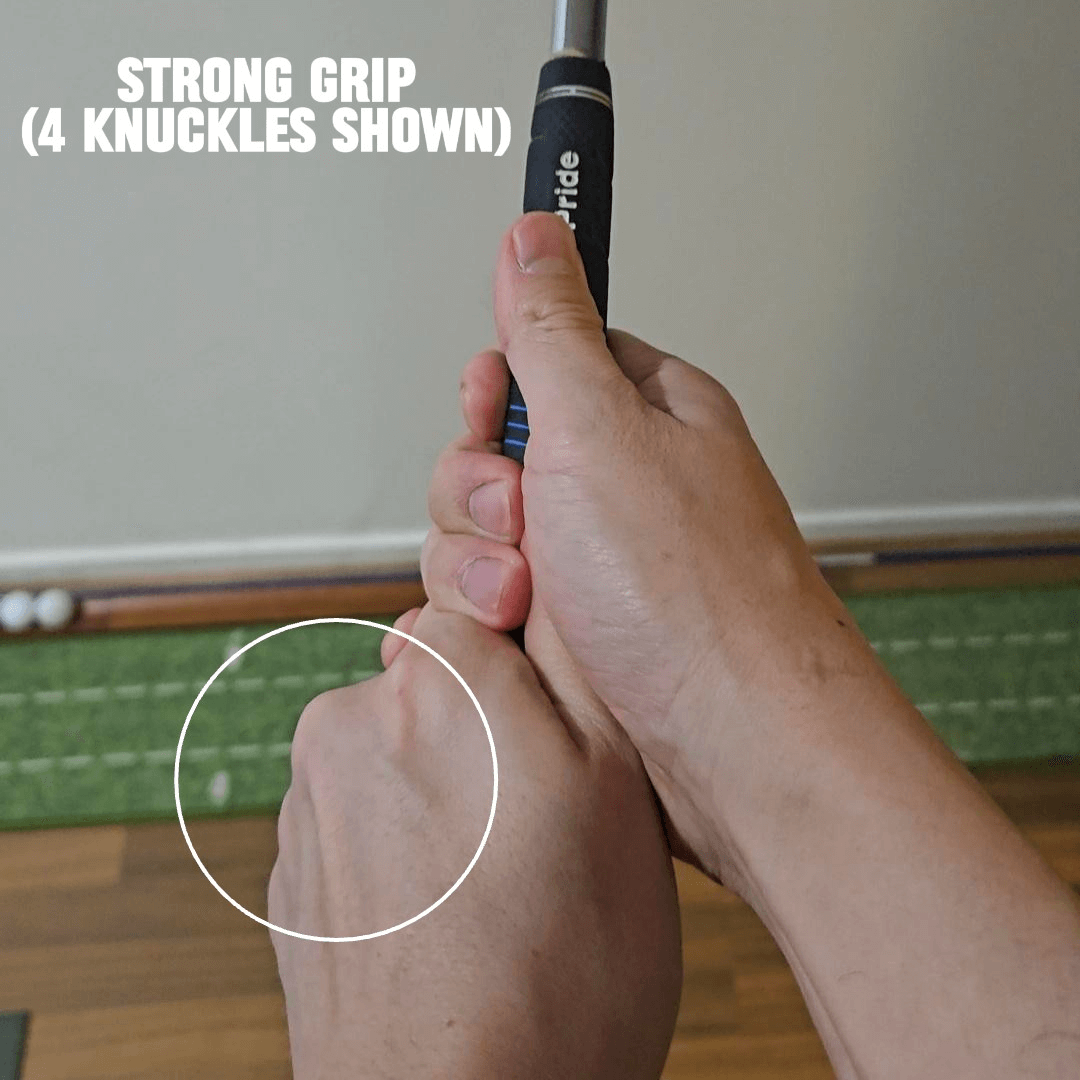
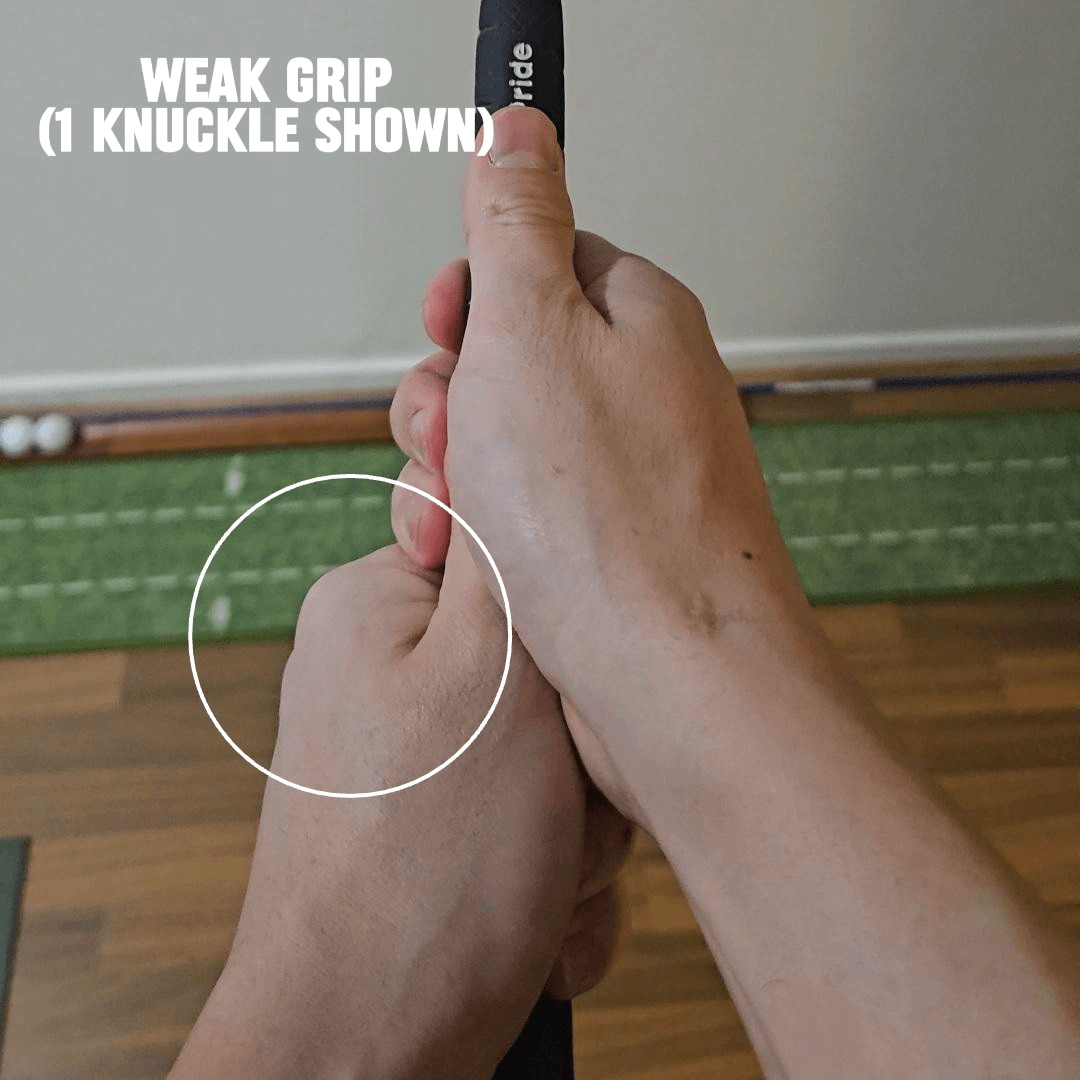
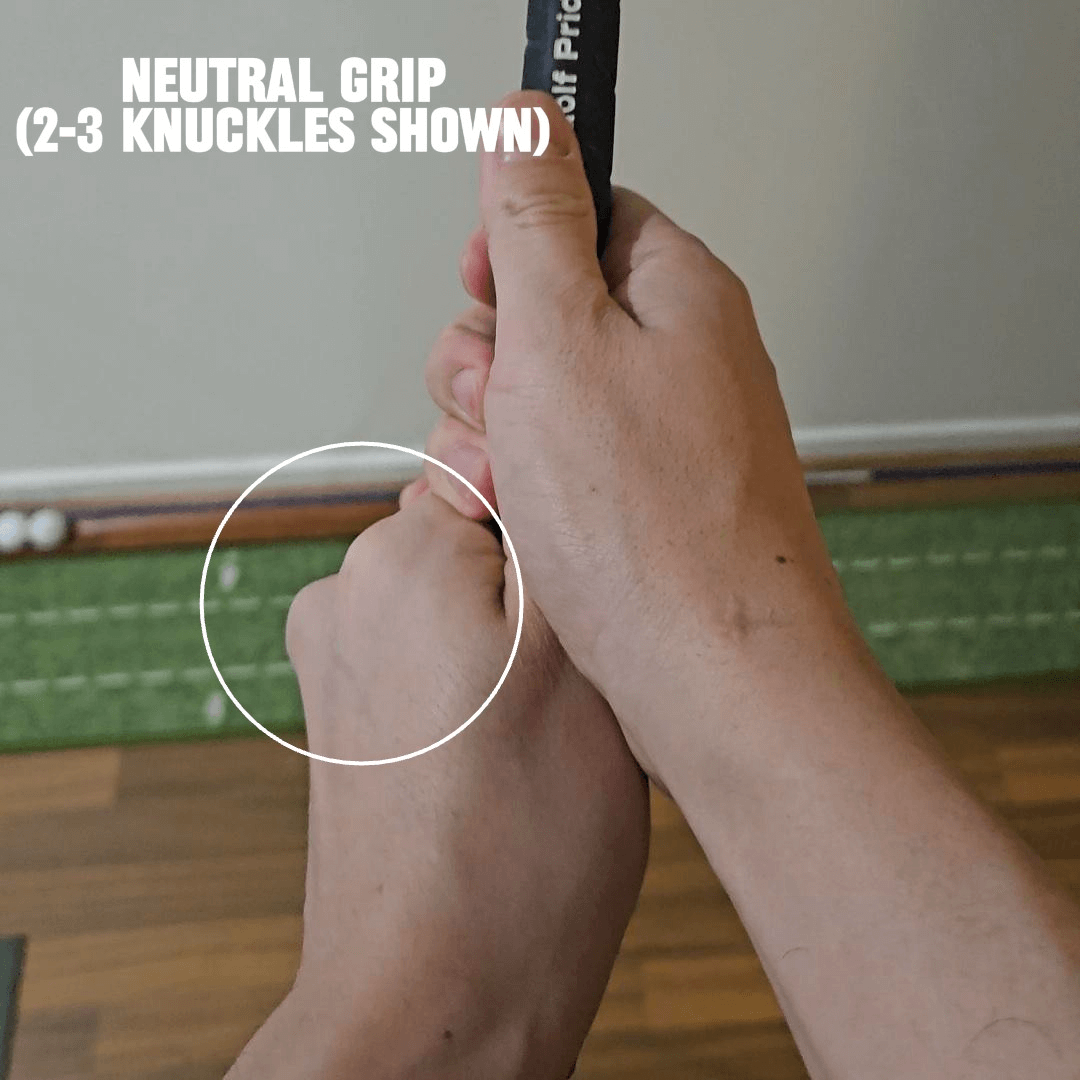
Why this works: Weakening the grip slightly helps prevent excessive clubface closure through impact. A neutral grip promotes better face control and allows you to match the face to the path more consistently.
Drill 2: Body rotation stability drill (towel drill)
This drill helps reinforce proper torso rotation through impact, which delays wrist release and prevents flipping.
Procedure:
- Place a towel across your chest and hold the ends of the towel under both armpits.
- Execute slow, controlled swings without a ball, focusing on rotating your chest through the shot.
- If either end of the towel drops mid-swing, you’re disconnecting—often a sign of early hand release that leads to hooks.
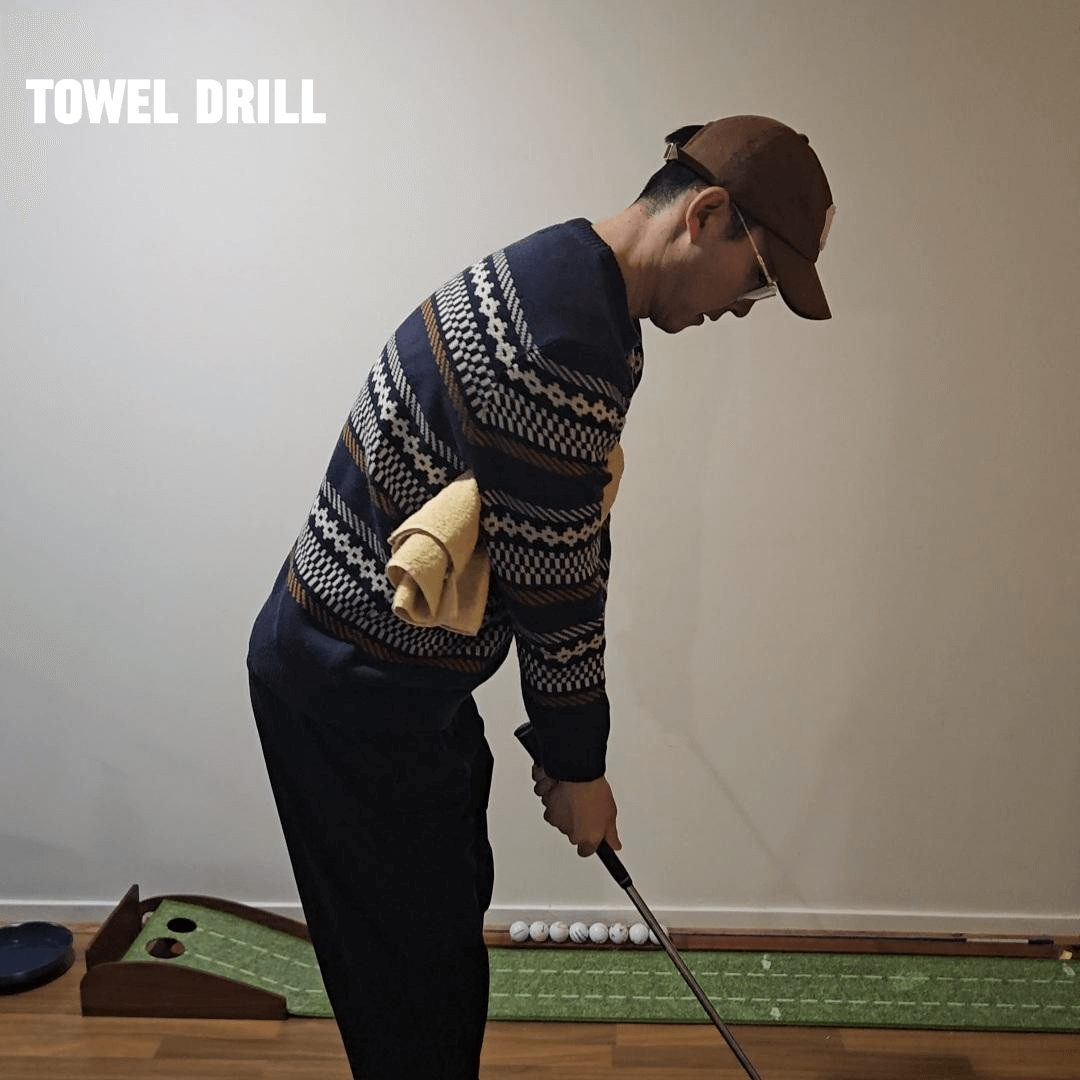
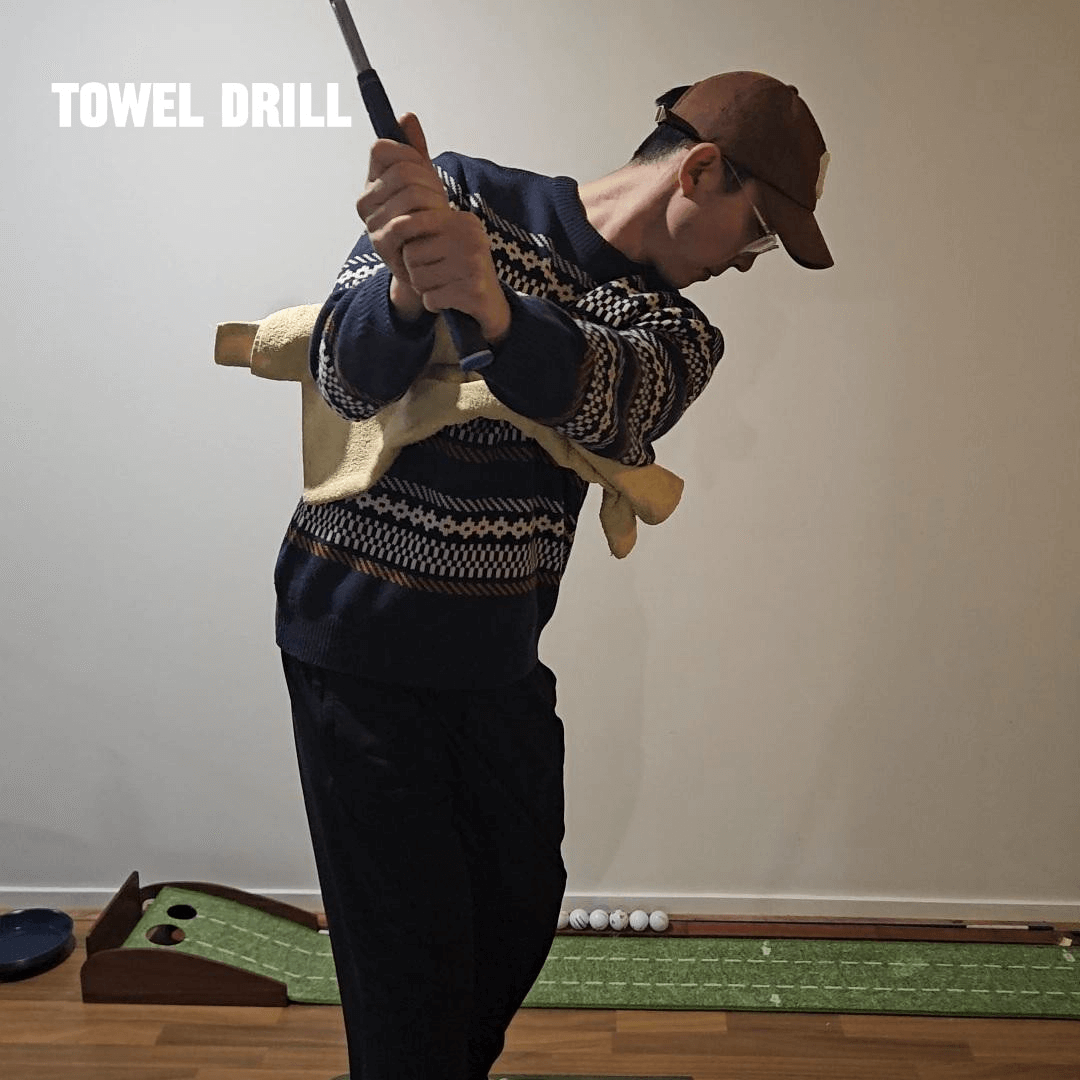
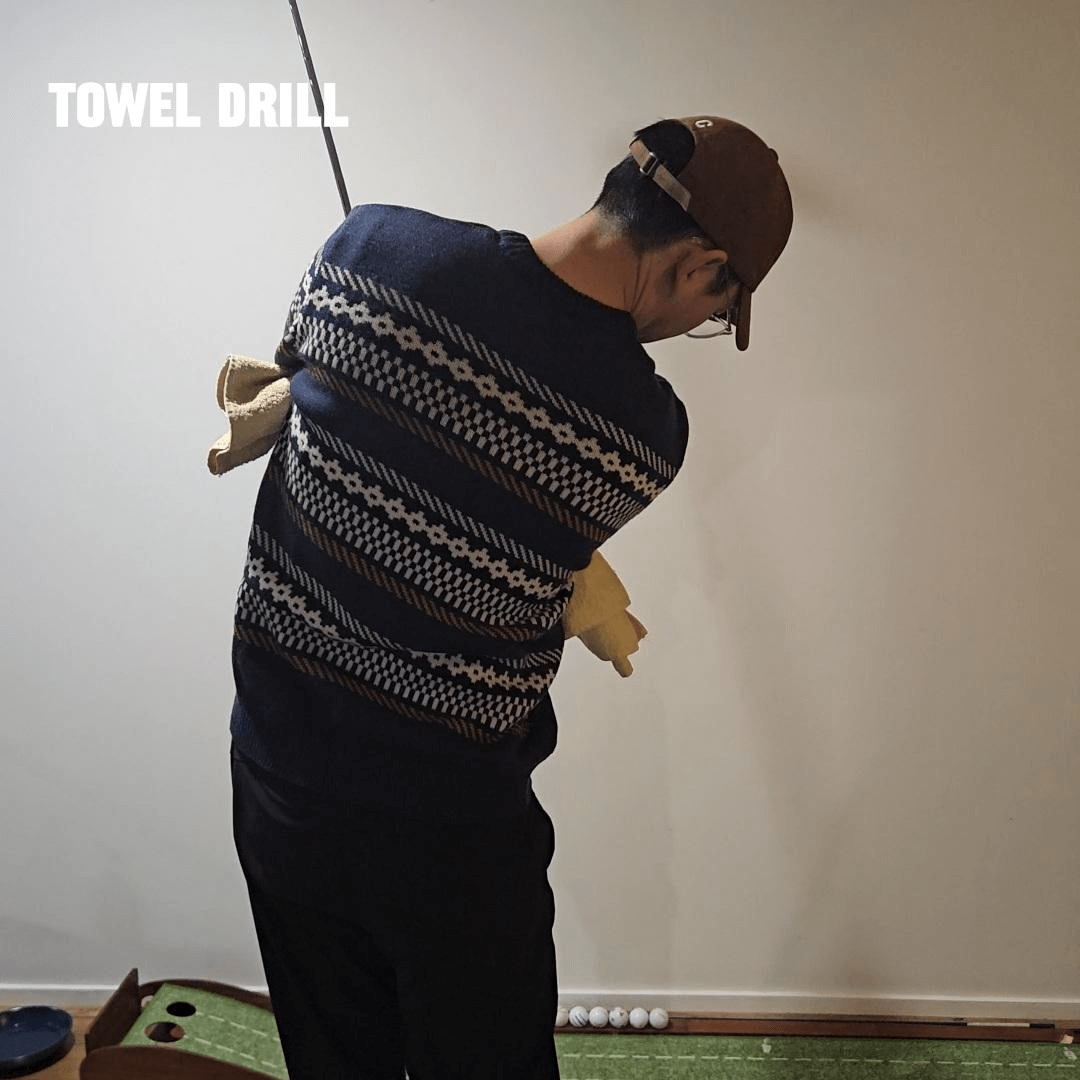
Why it works:
It teaches your body to move through the shot as a unit. Proper torso rotation keeps the hands from over-releasing and helps square the clubface later in the swing, reducing hook spin.
Drill 3: Swing path feedback gate (gate drill)
This drill provides immediate feedback on your swing direction and helps reinforce proper path orientation.
Setup:
- Set up your ball
- Position a ball about a foot behind your teed up ball, and slightly inside of the target line. Place another ball about a foot ahead of the teed up ball, and slightly outside of the target line. The two balls should create a diagonal line.
- Take full swings, aiming to strike the ball cleanly without hitting either of the two balls placed either side of the ball you are hitting. This drill helps correct an excessive out to inside swing path by tightening the angle of approach.

WWhy this works: The visual constraint forces you to keep the club more on-plane through the hitting zone. It discourages coming too far from the inside, which—when combined with a closed face—is a primary cause of a hook.
Summary
Hooks, like slices, are correctable with a blend of mechanics and motor pattern training. By neutralizing your grip, improving body rotation, and refining your swing path, you can turn a hook into a controlled draw or straight shot.
Looking to take the next step? We’re building the world’s most advanced AI golf coach called Ryform Golf. Record your swing using our app, and it will analyse your major swing faults and recommend drills to fix those issues. Head to the website to download the app.
